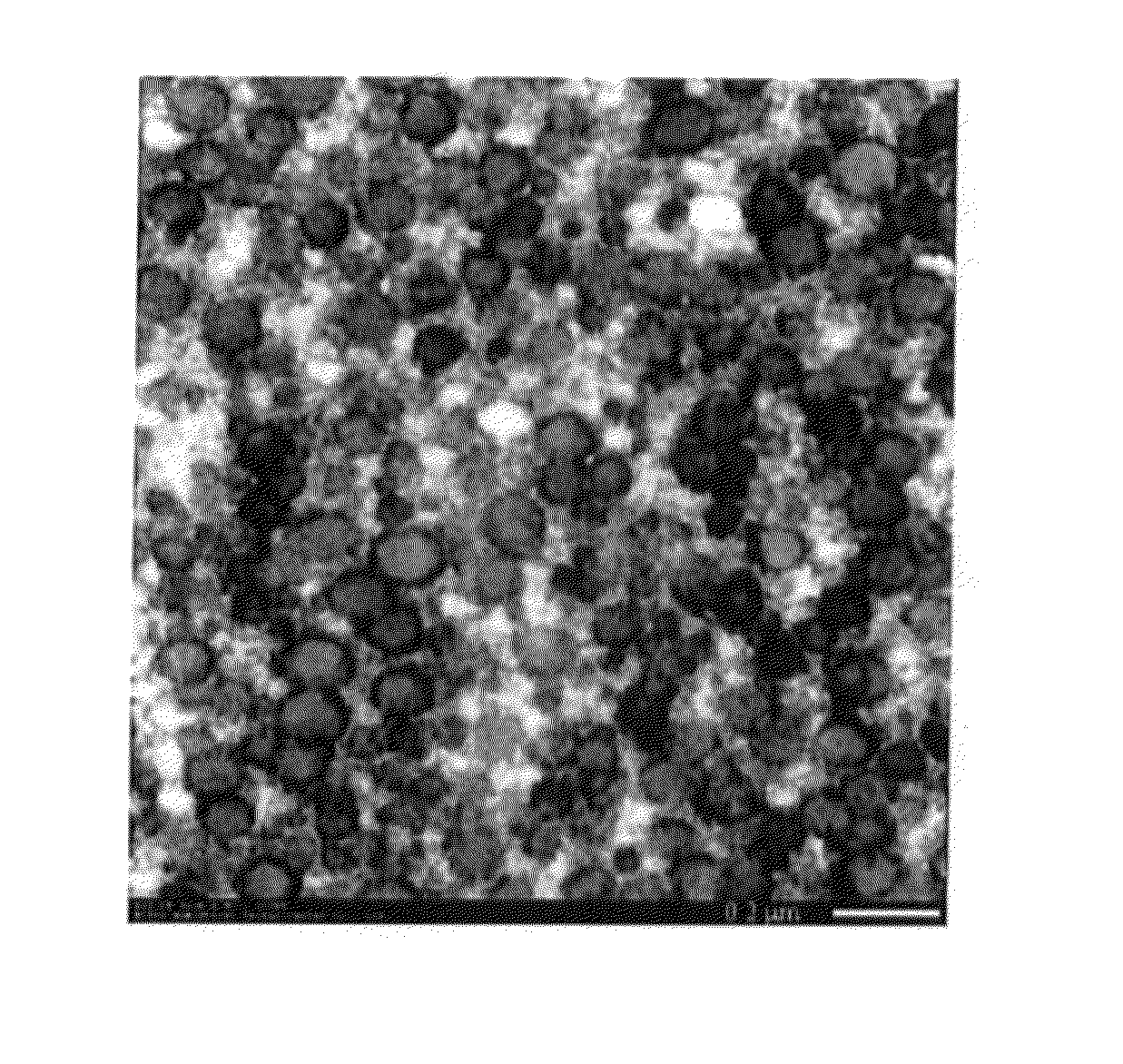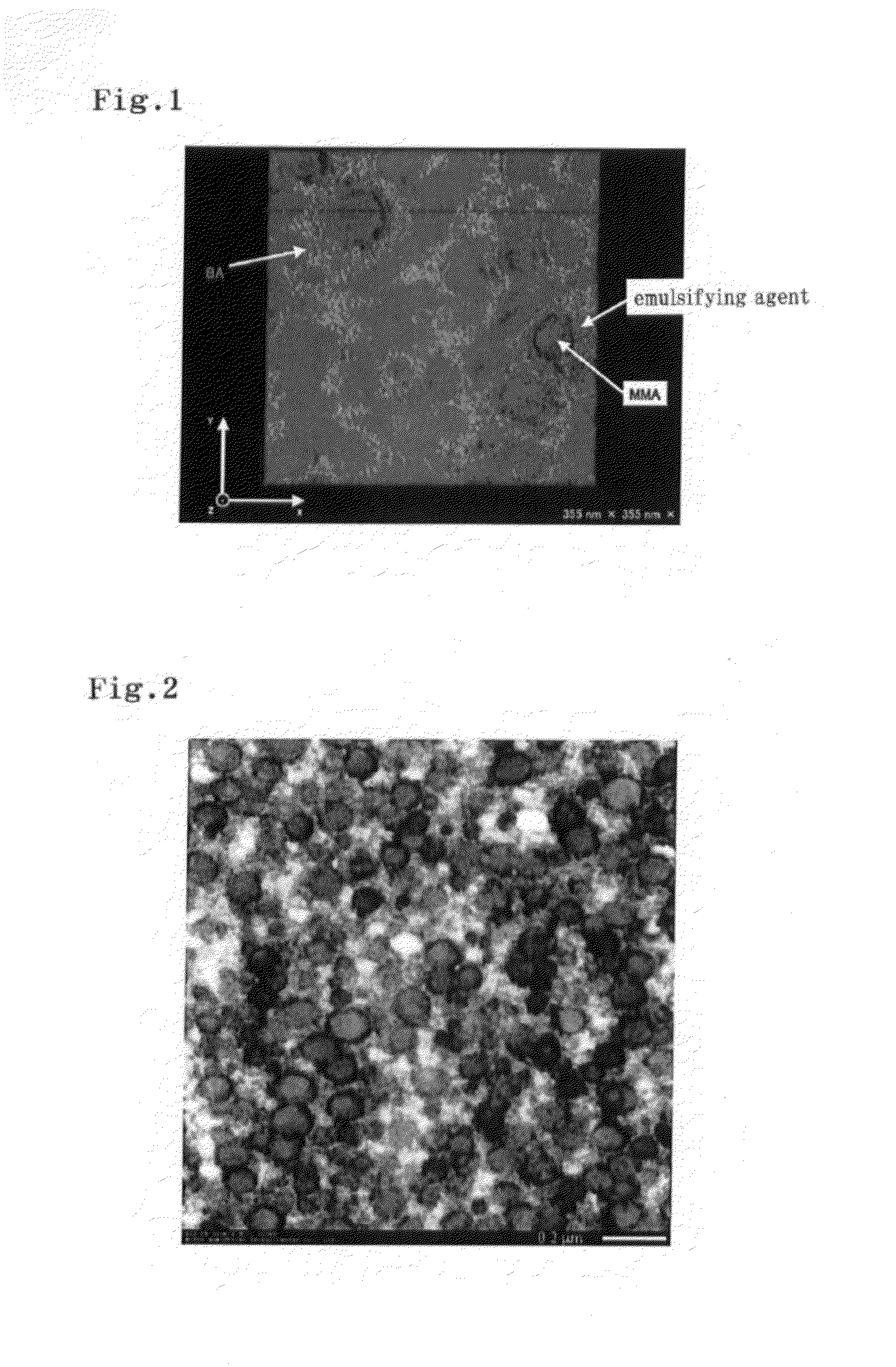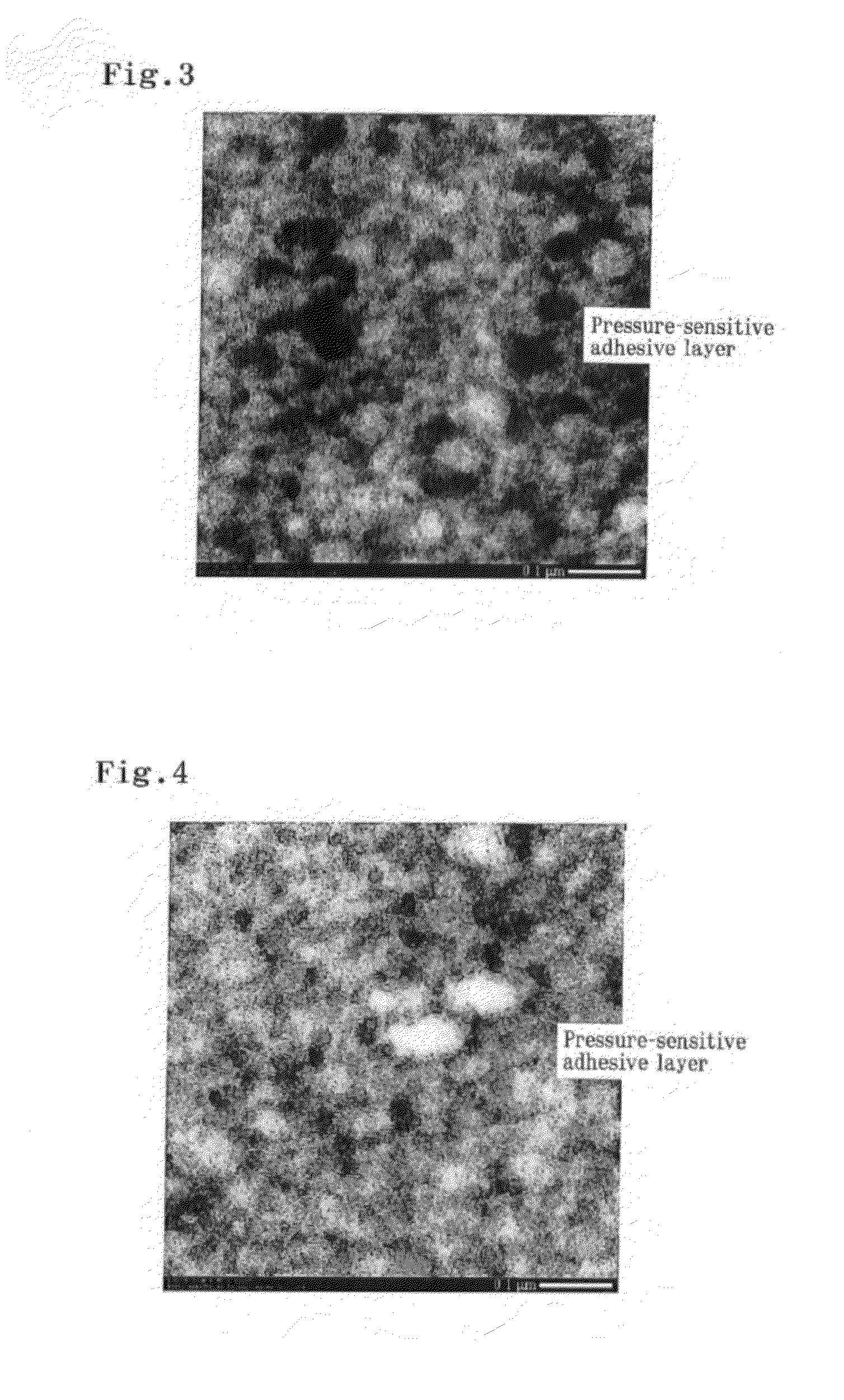Adhesive layer for optical film, optical film having adhesive layer, image display device, and detachment method for optical film
- Summary
- Abstract
- Description
- Claims
- Application Information
AI Technical Summary
Benefits of technology
Problems solved by technology
Method used
Image
Examples
example 1
Preparation of Aqueous Dispersion-Type Pressure-Sensitive Adhesive Composition
[0168]To a reaction vessel equipped with a condenser tube, a nitrogen-introducing tube, a thermometer, a dropping funnel, and a stirring blade were added 200 parts of the monomer emulsion (1a) prepared as described above and 330 parts of ion-exchanged water. Subsequently, after the space in the reaction vessel was replaced with nitrogen gas sufficiently, 0.6 parts of ammonium persulfate was added to the vessel, and the mixture was subjected to polymerization at 60° C. for 1 hour with stirring, so that a copolymer for forming a core layer was obtained. Subsequently, 800 parts of the monomer emulsion (2a) was added dropwise to the reaction vessel over 3 hours, while the reaction vessel was kept at 60° C. The mixture was then subjected to polymerization for 3 hours to form a shell layer, so that an aqueous dispersion with a solid concentration of 46.0% containing polymer emulsion particles of a core-shell str...
examples 2 to 12
[0170]Aqueous dispersion-type pressure-sensitive adhesive compositions, pressure-sensitive adhesive layers, and pressure-sensitive adhesive layer-attached polarizing plates were obtained as in Example 1, except that at least one of the type of the monomer emulsion used to form the copolymer (A) for the core layer, the type of the monomer emulsion used to form the component (B) for the shell layer, and the ratio of the copolymer (A) to the component (B) was changed as shown in Table 1 in the preparation of the aqueous dispersion-type pressure-sensitive adhesive compositions.
example 13
Preparation of (Meth)Acryl-Based Copolymer Emulsion (A1)
[0171]To a reaction vessel equipped with a condenser tube, a nitrogen-introducing tube, a thermometer, a dropping funnel, and a stirring blade were added 200 parts of a portion of the prepared monomer emulsion (3) and 330 parts of ion-exchanged water. Subsequently, after the space in the reaction vessel was replaced with nitrogen gas sufficiently, 0.6 parts of ammonium persulfate was added to the vessel, and the mixture was subjected to polymerization at 60° C. for 1 hour with stirring. Subsequently, the remaining portion of the monomer emulsion was added dropwise to the reaction vessel over 3 hours, while the reaction vessel was kept at 60° C. The mixture was then subjected to polymerization for 3 hours to give a polymer emulsion with a solid concentration of 46.0%. Subsequently, after the polymer emulsion was cooled to room temperature, 10% ammonia water was added thereto to adjust the pH and the solid concentration to 8 and ...
PUM
| Property | Measurement | Unit |
|---|---|---|
| Temperature | aaaaa | aaaaa |
| Temperature | aaaaa | aaaaa |
| Temperature | aaaaa | aaaaa |
Abstract
Description
Claims
Application Information
 Login to View More
Login to View More - R&D
- Intellectual Property
- Life Sciences
- Materials
- Tech Scout
- Unparalleled Data Quality
- Higher Quality Content
- 60% Fewer Hallucinations
Browse by: Latest US Patents, China's latest patents, Technical Efficacy Thesaurus, Application Domain, Technology Topic, Popular Technical Reports.
© 2025 PatSnap. All rights reserved.Legal|Privacy policy|Modern Slavery Act Transparency Statement|Sitemap|About US| Contact US: help@patsnap.com



